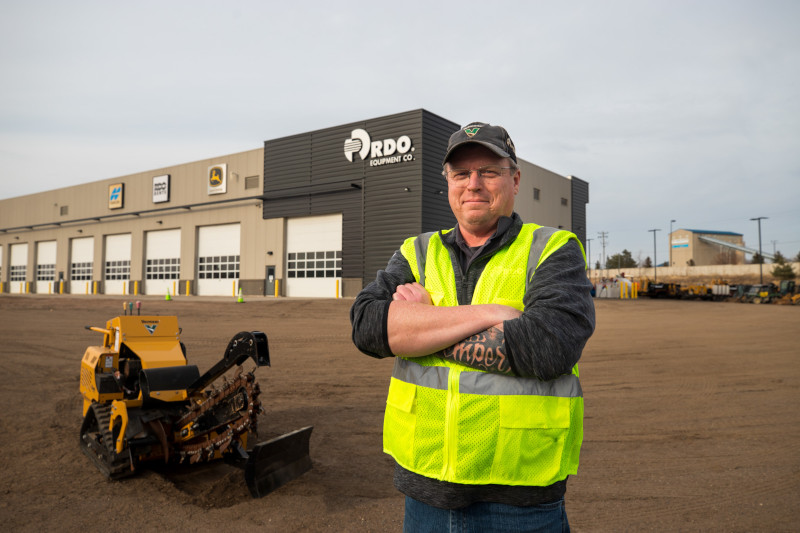Trenchers vs. Tool Carriers
There are compact tool carriers that are proud of their ability to perform a variety of functions, and conversely, there are those machines that focus primarily on one thing and one thing only — like trenching. The former will tout versatility as its calling card; the latter contends that doing one thing really well is a better approach. In the final analysis, however, both approaches have merit. The rub lies with identifying the approach that is the best fit for your specific operation.
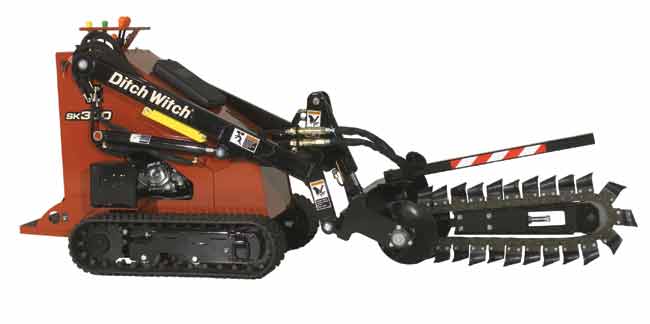
When analyzing which concept will best serve individual needs, contractors should begin by identifying the tasks that represent the bulk of their service offerings (i.e., the type of jobs completed most often). If digging trenches fulfills the greater sum of your menu of services, contractors will be better served by a model considered “dedicated” to trenching. That said, however, contractors shouldn’t ignore the other functions that they currently perform or may want to offer in the future as growth and expansion opportunities surface.
Recognize that trenchers are really tractors that can be adapted to perform other functions by changing attachments. Some models become typecast as dedicated trenchers based on the time and effort involved to change attachments for performing different tasks.
“The level of difficulty of changing rear attachments is a factor in how contractors utilize and view a machine,” says Jon Kuyers, utility segment manager at Vermeer. “If the perception that changing attachments is too time-consuming and labor-intensive, the machine becomes dedicated, which is fine if the work completed most often by a contractor is trenching jobs. But it’s also a predisposition that may limit the versatility of a machine.”
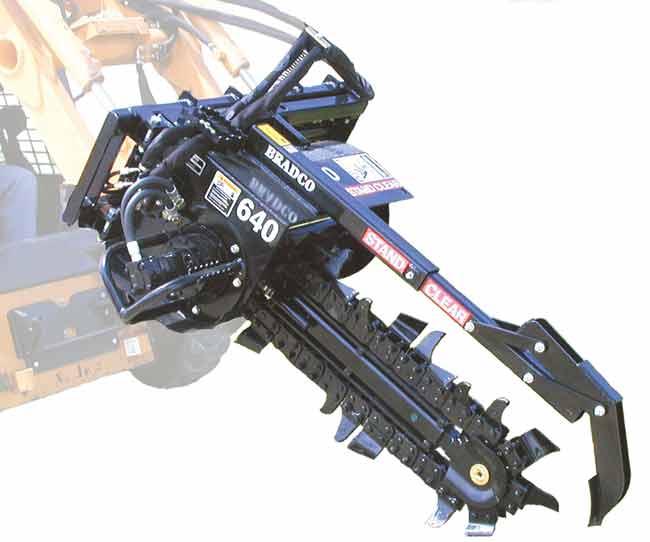
Dedicated trenchers are likely the best solution for contractors who often tackle longer trenching jobs, e.g., projects like main-line utility installations — gas, water, fiber and irrigation lines — that require a machine designed specifically to trench for the long haul.
If, upon further review, a contractor decides to go the “undedicated” route, different trenching attachment options are available for most compact tool carriers. Vermeer, for example, manufactures one such attachment for its compact tool carrier models that is capable of trenching depths up to 48 in. and widths ranging from 4 to 8 in. wide. The trencher requires 10 to 14 gpm of hydraulic flow with 2,750 psi.
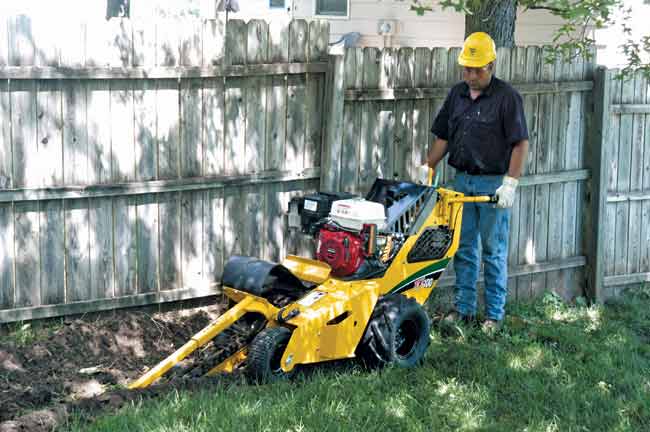
According to Kuyers, matching the right size trencher attachment to the compact tool carrier model varies by the project. “The depth and width is job-specific,” he says. “Trenching in utility lines may not require the same chain, depth or width as an irrigation contractor.” Types of installations that are typically ideal for a compact tool carrier with a trencher attachment include installation of electrical lines for lighting, irrigation, drainage systems and utility service installation from curb to home.
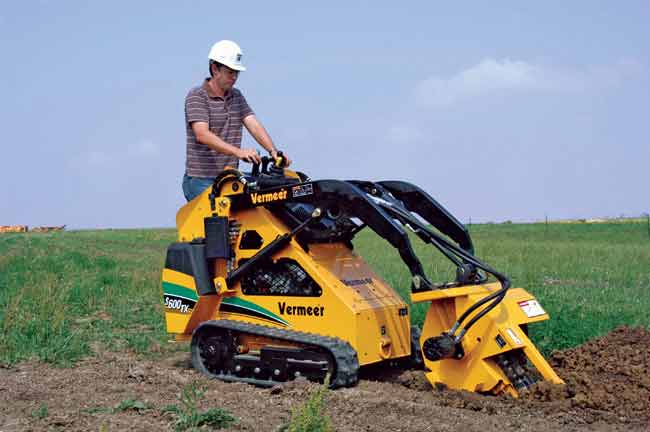
Compact tool carriers with trencher attachments — auger, powered rake, dozer blade, etc. — are most often hydraulically driven, which helps provide reasonable maintenance costs and operational efficiency. A hydraulically driven trencher allows for the chain to be operated in reverse mode if the digger chain encounters an obstacle such as a tree root. Reversing of the chain can help prevent wear and tear or damage to the attachment. Operationally, there is little difference between dedicated trenchers and compact tool carriers with a trencher attachment.
Randy Happel is a technical writer for Two Rivers Marketing, based in Des Moines, Iowa.

